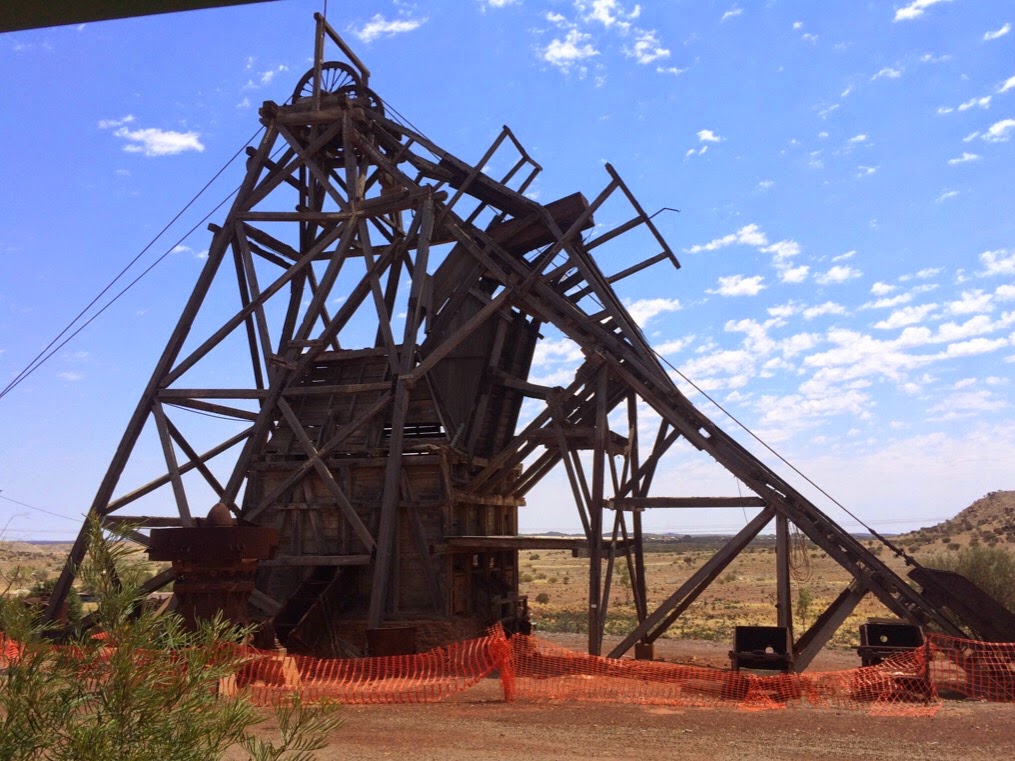 Like many towns in the goldfields, Menzies was once a thriving town with a population over 10,000 and 13 pubs, 3 banks, a brewery, a post office with 26 employees, a school with 205 students, a public library and 4 churches! By 1910 the population had dropped to 1,000 when the gold ran out. These days there's only a few hundred (if that). Some of the old buildings are still here and there's a great historic walk with steel cut-outs and interpretive panels. There's still one pub with good food - we had lunch there yesterday.
Like many towns in the goldfields, Menzies was once a thriving town with a population over 10,000 and 13 pubs, 3 banks, a brewery, a post office with 26 employees, a school with 205 students, a public library and 4 churches! By 1910 the population had dropped to 1,000 when the gold ran out. These days there's only a few hundred (if that). Some of the old buildings are still here and there's a great historic walk with steel cut-outs and interpretive panels. There's still one pub with good food - we had lunch there yesterday.
 About 50km out of Menzies, on the Sandstone road is the Lake Ballard salt lake. The lakes here were once a vast river system which has dried up. The average annual rainfall here is only about 250mm (11"), so any rain that falls evaporates very quickly. The only time there's water in the lake is when the remnants of a cyclone comes through - not very often.
About 50km out of Menzies, on the Sandstone road is the Lake Ballard salt lake. The lakes here were once a vast river system which has dried up. The average annual rainfall here is only about 250mm (11"), so any rain that falls evaporates very quickly. The only time there's water in the lake is when the remnants of a cyclone comes through - not very often.

Our main purpose of coming out to Lake Ballard is to see Antony Gormley's "Inside Australia" sculpture installation. The 51 sculptures are derived from laser scans of Menzies inhabitants. The alien-like sculptures are placed on the salt lake and we walked around for an hour or so looking at the graceful forms. Robert climbed up the pyramid hill for an overall look at the lake.
After morning tea we drove a bit further on to Snake Hill to another lookout.
This land has a spiritual quality and it's vastness really emphasises our insignificance in natures scheme.




















































































